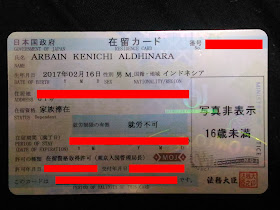Making diurnal variation (DV) plot with GrADS is quite easy, especially if you have already known how to make Hovmoller diagram. The two plots are almost similar, with DV utilizes time-time axis instead of longitude-time or latitude-time pairs as Hovmoller. Furthermore, in order to make a DV with GrADS, one should first creates a binary file with modified X-Y grid which represents the time axis. A detail guide for making a GrADS gridded binary file could be read here.
1. Creating GrADS binary file
A DV plot is basically a modified time series plot. If a time series runs along the full time period, then the DV divides the full time period (e.g. 1 month) into smaller 24-hour time periods hence giving the name 'diurnal' or daily plot. Since the data source is same, DV could use the same data set as time series, with the exception for the file writing method into binary file.
'reinit'
'open aerosol.ctl'
'set fwrite aerosol_ts.dat'
'set gxout fwrite'
'set x 1'
'set y 1'
'set z 1'
'set t 1 744'
'd tloop(aave(dustload5,lon=76.2,lon=78.2,lat=27.6,lat=29.6))'
'd tloop(aave(msa,lon=76.2,lon=78.2,lat=27.6,lat=29.6))'
'd tloop(aave(dms,lon=76.2,lon=78.2,lat=27.6,lat=29.6))'
'd tloop(aave(pm25,lon=76.2,lon=78.2,lat=27.6,lat=29.6))'
'd tloop(aave(so2,lon=76.2,lon=78.2,lat=27.6,lat=29.6))'
'disable fwrite'
The above script will make a 744-hour (1 month) time series data of 5 variables into a binary file. Notice that the script will save the data with sequential order on time as the X-grid in the binary file. In other words, we change the time dimension into space dimension (T-grid into X-grid). This file writing method is different from common time series plot data.
2. Making GrADS CTL file
The CTL file for DV plots is basically same with time series, with the only difference on the dimension definition. The main trick to make a DV plot is to modify 1-dimension data, in this case, X-grid with 744 grid numbers, into 2-dimension data: X and Y-grids, with 24 and 31 grid numbers respectively.
DSET ^aerosol_ts.dat
TITLE This is experimental
UNDEF 99999.0
XDEF 24 LINEAR 1 1
YDEF 31 LINEAR 1 1
ZDEF 1 LINEAR 1 1
TDEF 1 LINEAR 00Z01MAY2017 1mo
VARS 5
dustload5 0 99 Total dustload
msa 0 99 MSA
dms 0 99 DMS
pm25 0 99 PM2.5 Aerosol
so2 0 99 Sulphur Dioxide
ENDVARS
Notice that instead of full time period (744 hours or grids) which was written as X-grid in the binary file, the XDEF contains 24 grids (which represents 24-hour), YDEF contains 31 grids (which represents the day/date) and TDEF only contains 1 grid. This will make GrADS 'thinks' that the data file is a 2-D data (monthly) instead of 1-D data (hourly). Save the file with any name e.g. aerosol_ts.ctl.
3. Displaying the DV plot
Once the CTL file is saved, just open the data as usual. Since the plot uses X and Y-grids which are originally used for real-world coordinates, don't forget to set the map draw off. We can use contour, shaded-contour or filled-grid to display the plot.
ga-> open aerosol_ts.ctl
ga-> set mpdraw off
ga-> set gxout grfill
ga-> d dustload5
This is the result looks like (filled-grid with contour):



















